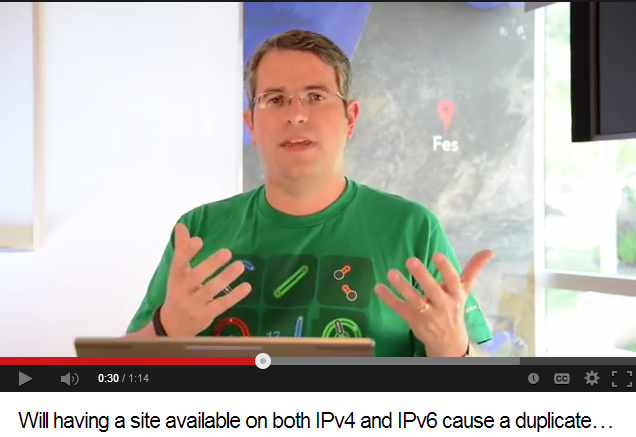In the latest Google Webmaster Help Channel video, Search Engineer Matt Cutts explained the difference between duplicate web content and sites that use more than one domain, especially if it provides users with better experiences. Specifically, Cutts reported that companies aren’t likely to be penalized if they publish content on IPv4 and IPv6 domains or multiple international sites. This underscores a point Google has been pushing all year – it should be easy for sites to avoid penalties if they aren’t doing anything glaringly spammy.
“IPv4 is an IP address that’s specific with four octets and IPv6 is specified with six identifiers like that, and you’re basically just serving up the same content on IPv4 and IPv6. Don’t worry about being tagged with duplicate content,” Cutts advised.
According to Google’s Webmaster Guidelines, duplicate content includes automatically generated text and information that’s been scraped from other sites or generic copy. The search engine also punishes domains that use generic digital content to populate their pages instead of creating high-quality, original articles.
This is separate from sites that serve international audiences, and therefore distribute their content on different domains for their intended prospects.

“Spammers are very rarely the sorts of people who actually buy multiple domains on different country-level domains and try to have that sort of experience … that’s very rarely an issue for ranking,” said Cutts.
Brafton recently covered a separate update from the search engine that shared a similar message about safe practices. Unless marketers are using the “no-follow” tag to prevent links from passing Pagerank excessively, in a way that’s manipulative or malevolent, it’s a Google-approved way to share links.
Rather than worrying about extreme SEO tactics that might fall under an algorithmic penalty, Cutts says marketers are better off focusing on content quality and giving prospects excellent on-site experiences. For now, the best way to do that is to create a range of content that engages visitors across touchpoints, from informative articles and attractive infographics to interactive video clips and compelling social content.





